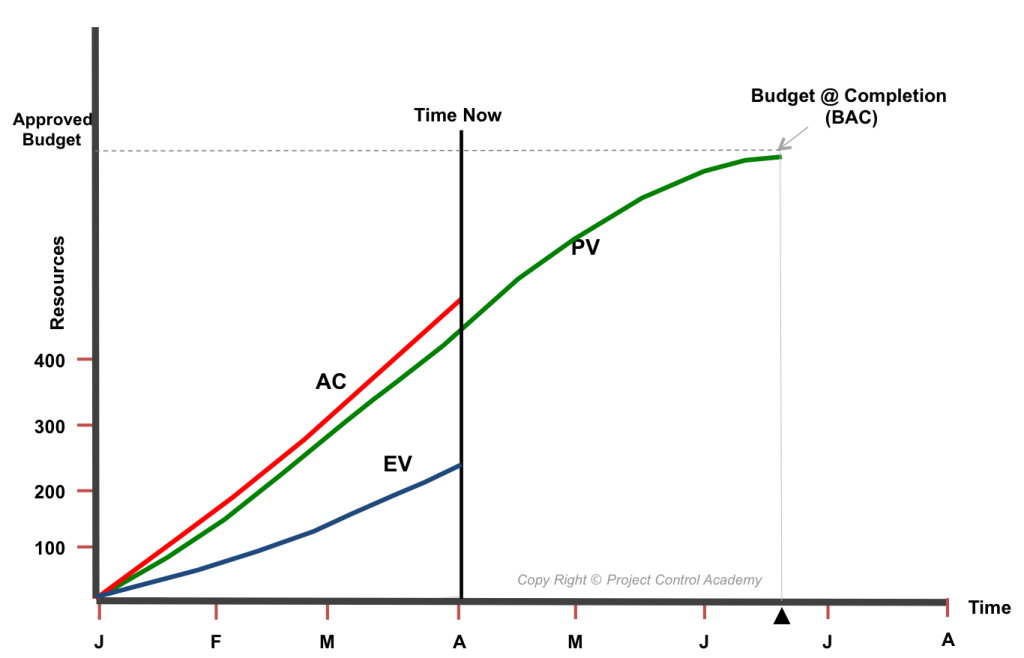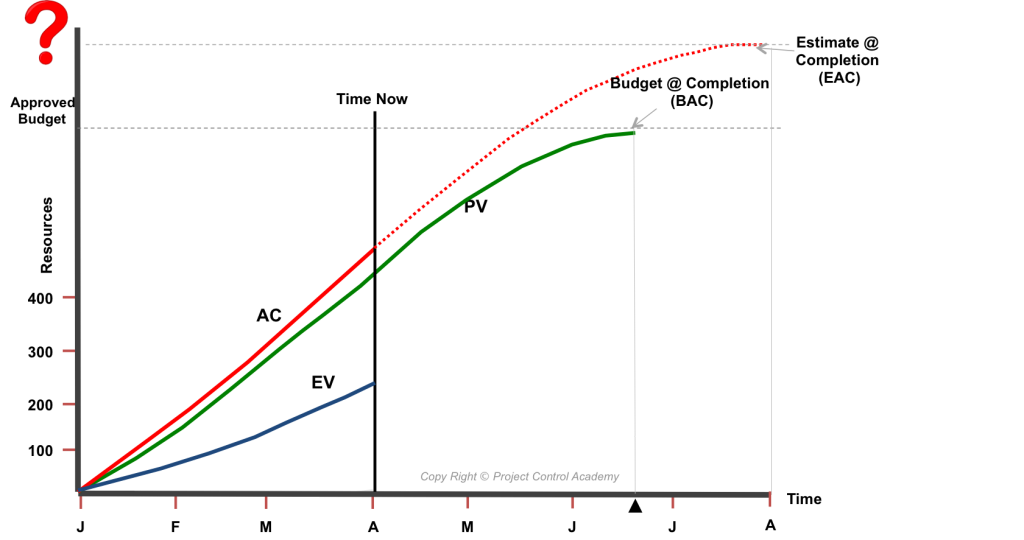How do you forecast the cost at completion of your projects?
There are various methods to cost forecasting. Check out this video to learn the “performance-based cost forecasting methods” using Earned Value Management.
Download the free audio mp3 podcast of this episode on iTunes.
Want more training? Subscribe to Project Control Academy to receive complimentary training videos and resources delivered to your mailbox.
Project Control Quotes to Consider: Join Project Control Academy on Instagram for tons of great quotes.
Video Transcript:
How do you forecast the cost at completion of your projects?
What cost forecasting methods do you use?
There are various methods to cost forecasting: Risk based methods, regression based methods, and performance based methods:
The focus of this post is on “performance-based cost forecasting methods” using Earned Value Management.
Earned Value Management (EVM) is a well-known technique to control the time and cost performance of a project and to predict the final project cost. It assists in generating early warning signals to timely detect problems or to exploit project opportunities.
I assume that you are familiar with Earned Value Management (EVM). If not, I encourage you to check our free 10-day training series on EVM before proceeding with this post.
Talking about forecasting the cost at completion of a project, let’s understand what we are trying to forecast here.
Consider this project:
The project’s approved budget is distributed over the planned duration of the project and formed the Planned Value or PV.
Planned Value, also known as, Performance Measurement Baseline (PMB) is the result of the integrated project planning effort.
The total Planned Value should always match the project total approved progress based budget, also known as Budget at Completion or BAC.
The next element is the Actual Cost (AC).
Actual Cost (AC) is the total cost incurred for the actual work completed to date.
By having the time-phased budget and actual cost, we cannot accurately predict the project’s cost at completion. Another element is required, which is the value of accomplishments or Earned Value.
Earned Value (EV) is the value of what has been actually accomplished in the project.
Now, based on these data, we would like to forecast the cost of the project, as the project progresses and eventually the estimated project’s cost at completion, known as EAC.
Therefore, Estimated Cost at Completion (EAC) is what we are trying to forecast.
The Formula For Performance-Based Cost Forecasting
The good news is that there is a universal formula you can use for your cost forecasting.
The Universal Formula:
Estimate at Completion (EAC) is the “Money Already Spent on the Project (AC)” plus the “Money that will be Spent to complete the project (ETC)”;
EAC = AC+ETC
In the above formula, you can get the actual cost (AC) from your financial/timesheet system. Now, the question is how to calculate the remaining cost, or ETC.
The ETC Formula:
Let’s come up with the ETC formula together.
We are trying to calculate the remaining cost to complete the project (ETC), right?
Is ETC the difference between the budget (BAC) and what is spent to date (AC), or
ETC= BAC-AC
What do you think of the above formula for ETC?
Well, Budget at Completion (BAC) minus the Actual Cost (AC) gives you the budget left in your pocket, not necessarily the cost of the work left. So, how can you calculate the cost of the work left to be completed?
Yes, you need to consider the actual progress of work and what is accomplished to date. This brings Earned Value (EV) into the equation.
Therefore, the estimated cost to complete the project would be:
ETC= BAC-EV
Budget at completion (BAC) minus the Earned Value (EV) gives you the remaining budget according to what is truly left to do in your project.
The above formulas for ETC work very well at the beginning of the project, approximately up to 20-25% overall project progress. However, as you progress through the job, you need to consider the project performance in your forecast.
If you have a bad performance, do you need more money to finish the job or less?
That’s right, you need more.
That’s why you need to divide your remaining cost by performance factor to have the right prediction of the remaining budget.
Therefore, the formula for Estimate to Complete (ETC) would be:
The Performance Based Formula:
and
Now the question is what the “projected performance factor” is. Is it CPI (Cost Performance Index)? Is it SPI (Schedule performance index)?
The answer to this question leads us to the next article; Performance-Based Cost Forecasting.
About the Author, Shohreh Ghorbani
 Shohreh is the founder and director of Project Control Academy, the leading provider of comprehensive online training programs in Project Controls. Shohreh has served tens of thousands of professionals and several international corporations build their technical Project Controls knowledge and shave off years of trial and error in learning the vital skills in controlling their projects.
Shohreh is the founder and director of Project Control Academy, the leading provider of comprehensive online training programs in Project Controls. Shohreh has served tens of thousands of professionals and several international corporations build their technical Project Controls knowledge and shave off years of trial and error in learning the vital skills in controlling their projects.
Shohreh is a licensed project management professional (PMP) recognized by Project Management Institute (PMI) and holds a Master of Science in Industrial Engineering.
Connect with Shohreh via Facebook, Linkedin, Google+, Instagram, iTunes, YouTube






















